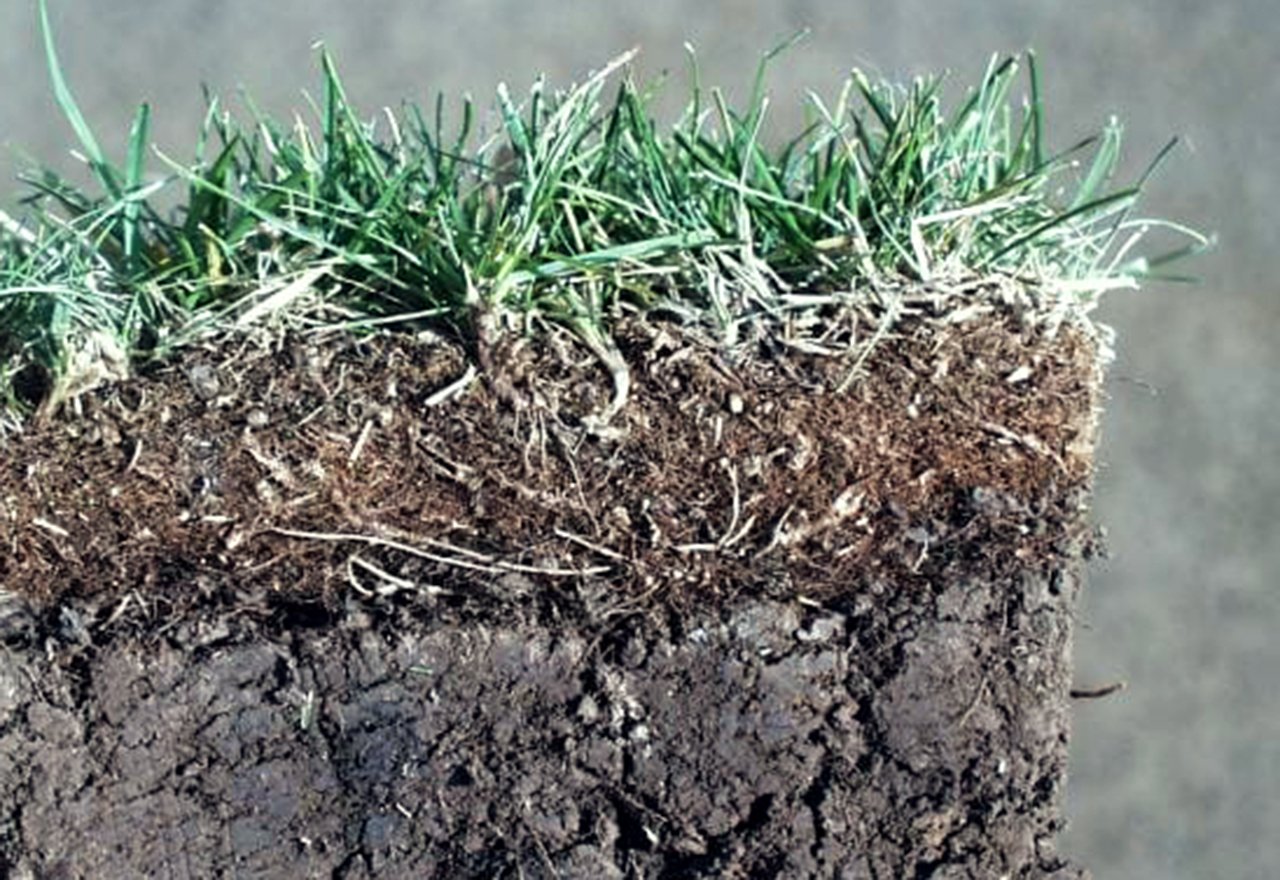A Layer of Shoots, Stems and Roots that Accumulate Above the Soil Surface

Thatch is a layer of both dead and living shoots, stems and roots that accumulate just above the soil surface. Thatch is not really made up of grass clippings. Grass clippings are mostly water and decompose easily.
Thatch is impossible to measure without taking a soil sample or cutting out a small spot of turf to expose the cross section of soil. Thatch levels will vary across the lawn so it is good to check a few spots. You can check Thatch with a pocket knife by just slicing vertically into the soil. Slice on four sides and pull out the plug so that you can look at the cross section, as shown in the photo.
A little Thatch can be good because it acts as an insulator, cooling the ground in hot weather. When thatch gets over 1/2 inch thick, however, problems can ensue. Thick Thatch keeps water and nutrients from reaching the root system, which will cause it to turn brown faster in the hot weather and make it more susceptible to insects (Grubs, Billbugs, Chinch Bugs), diseases (Brown Patch, Dollar Spot, Red Thread, Pink Patch) and weeds. Studies show that lawns weakened by insects or diseases have more weeds than ones that aren't.
Thatch accumulates when your grass produces shallow roots that die off and are not decomposed quickly. Fertilizing with quick-release synthetic fertilizers can make Thatch worse by stimulating shallow root growth and also killing off beneficial soil microbial life that would otherwise help to decompose Thatch. The following things can make Thatch worse.
If you have a lot of Thatch, over 1/2 inch, the first decision you need to make is whether or not you want to try to work with the lawn you have, or if you would prefer to completely start over.
If you are going to work with what you have, there are two things you should do. First, recognize that your lawn is going to be susceptible to pests and you'll need to take adequate steps, using the safest organic materials, to prevent those pests. Secondly, you should begin a program to reduce Thatch buildup and begin its decomposition. To begin Thatch reduction and protect your lawn from problems we recommend the following.
